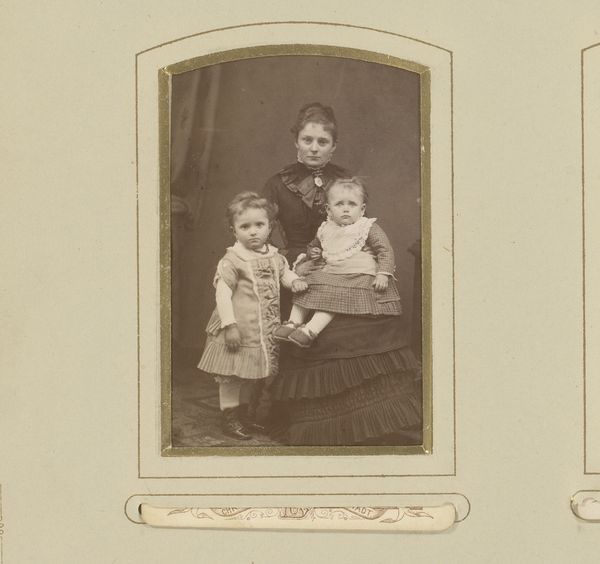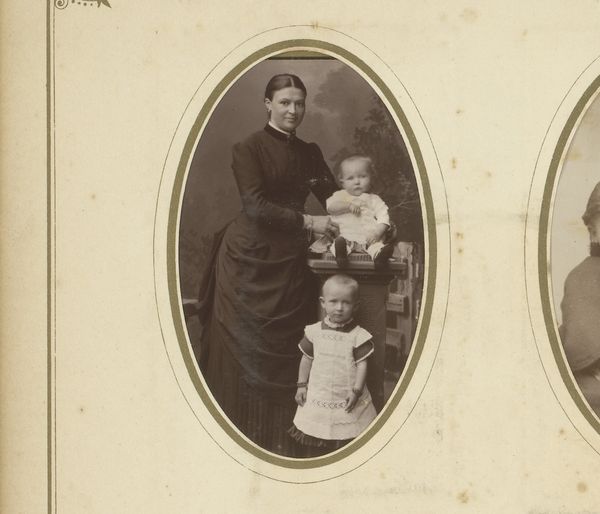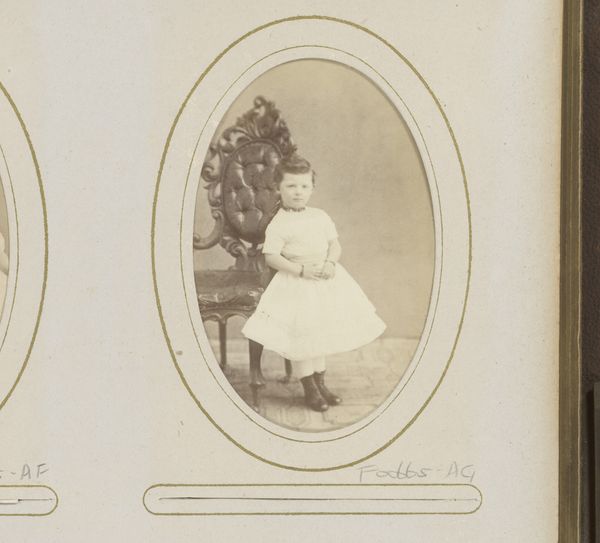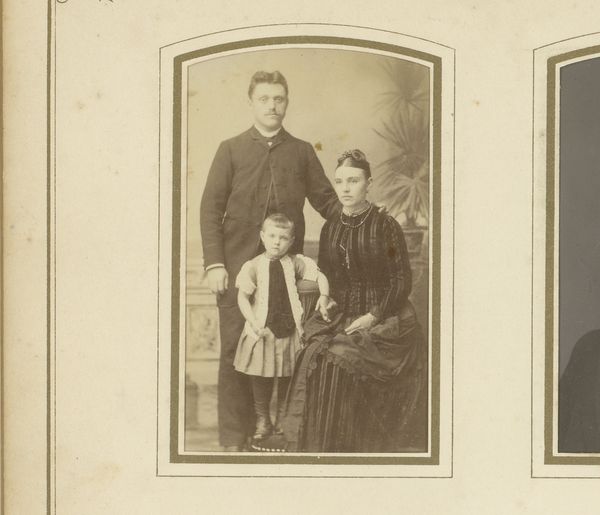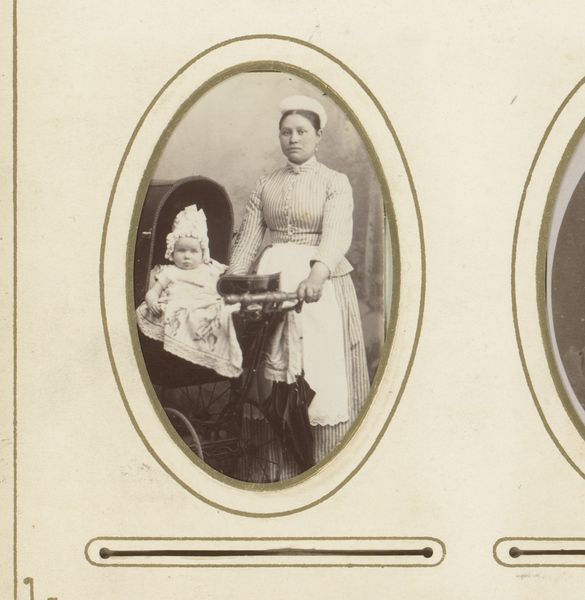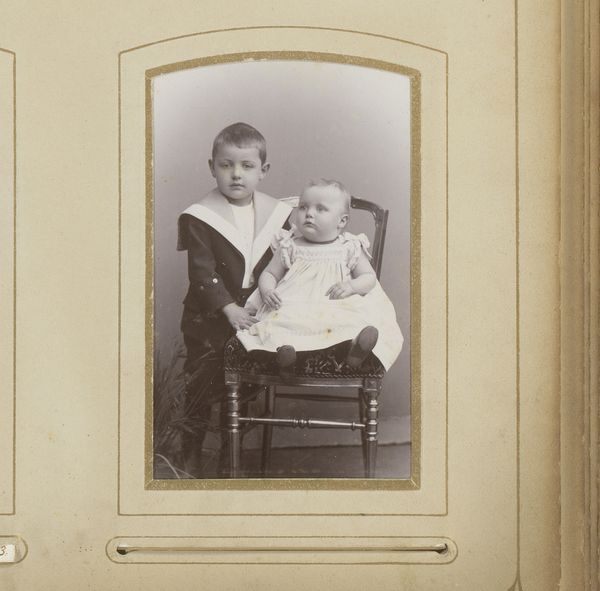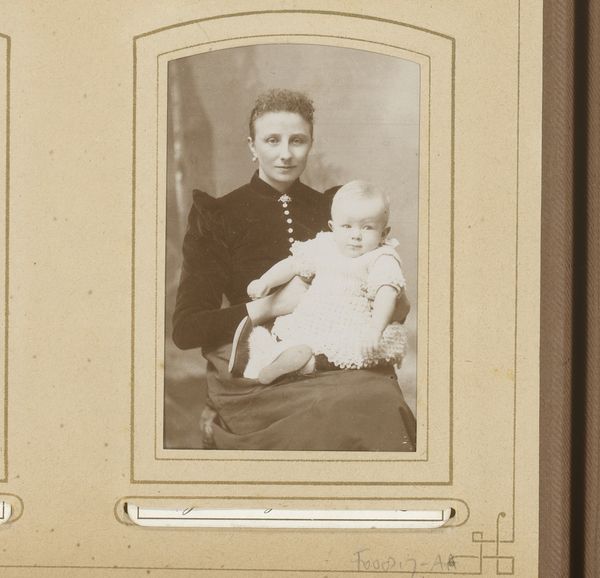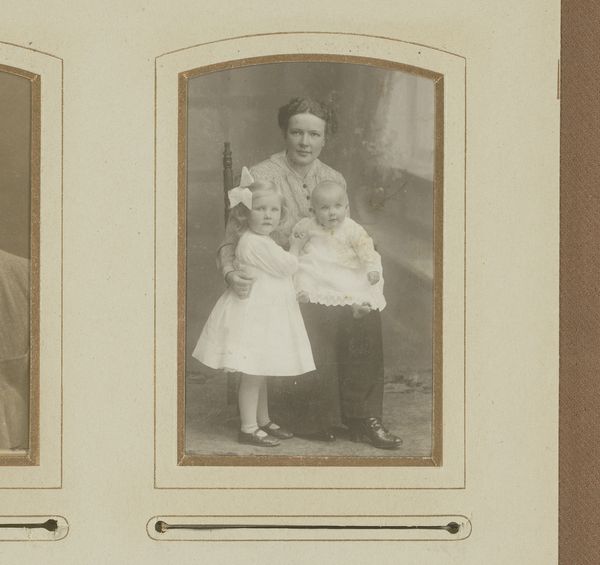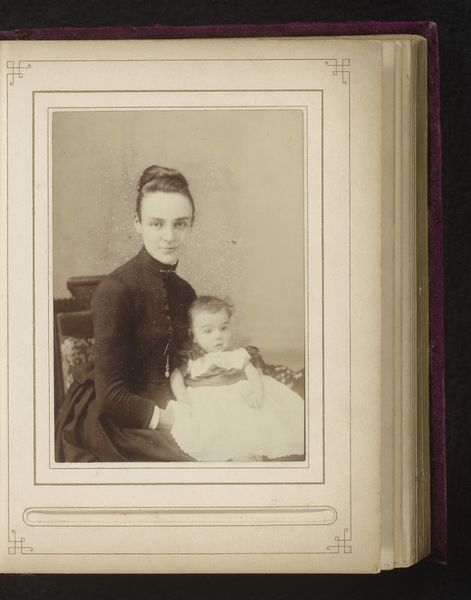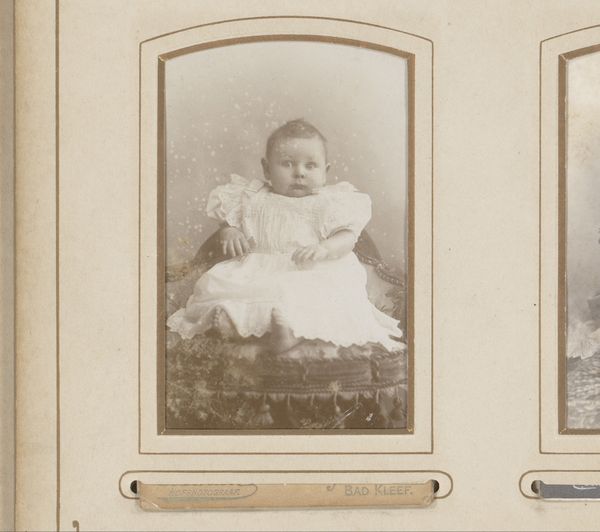
Dimensions: height 84 mm, width 54 mm
Copyright: Rijks Museum: Open Domain
Curator: Let’s turn our attention to "Portret van een vrouw met twee kleine kinderen," a gelatin silver print estimated to have been taken between 1860 and 1892 by Hermanus Siderius. Editor: Ah, it has that lovely, aged sepia tone… The woman looks so stern, but there’s something incredibly tender about the way she holds the children. Curator: Indeed. The composition adheres to classical portraiture conventions. Note the carefully arranged grouping within the oval frame and how the light emphasizes the faces. It's all quite deliberate. Editor: It makes you wonder about their story, doesn't it? What were their lives like? The detail in her dress, that stiff little bow, makes me feel nostalgic, in a strange way, like peering into someone's past. The slight blur tells of a long exposure time as well, meaning they had to stay still a considerable length of time. Imagine that as a baby. Curator: The romanticist style is certainly present. We can analyze how it projects societal values onto domestic tranquility through symbols like children, dress, and posture. Every visual choice underlines a defined class consciousness. Editor: Yes, a defined class consciousness… or just a mum holding her children, wanting to remember their little faces at this fleeting point in time. Perhaps Siderius had children of his own and wanted to capture the realness. There’s such raw emotion here. And the faces! So young, they show everything… such possibility. Curator: Certainly the subjects engage the eye. But looking past affect and affectation, one can assess it more thoroughly as a commentary on the societal expectations around maternity, with the formal rigor creating a certain... tension. The gelatin silver print serves here as a material encoding of these attitudes. Editor: I get it, I get it... "encoded attitudes." Still, seeing this just feels very familiar to me, a real intimate moment caught in time and carefully curated and displayed, it seems a great injustice. Curator: It certainly evokes such emotion. It allows us to ponder the social conditions in which it was produced, which should provoke further investigations. Editor: And perhaps, it helps us recognize that under stiff bows and encoded attitudes, there has always been real, raw feeling...
Comments
No comments
Be the first to comment and join the conversation on the ultimate creative platform.
